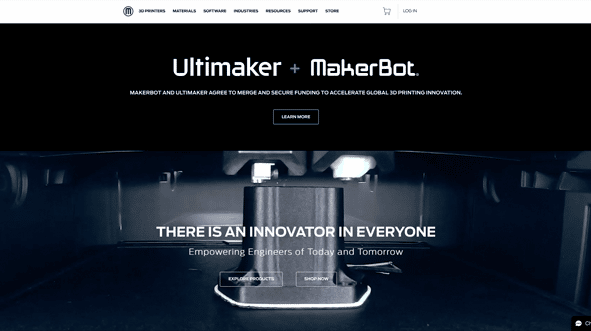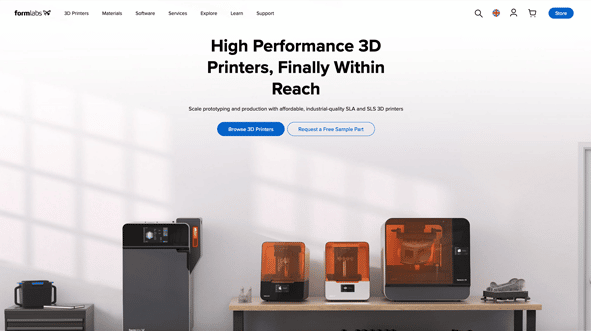How to Build a Team in the Midst of the Great Resignation – PART 2
Branding & Company Culture - Taking Action

Following our last article, we looked at how brand values play a part in building brand culture. We looked at this from a deeper brand purpose perspective.
Today we look at how to put the foundations we laid out in the first article to action.
Here’s a reminder of the question again:
“How do we ensure our new hires stick around while the business develops, especially in this ‘great resignation’?
And where can we find the right leadership that can help us to manage our team and further grow our business?”
We ended the last article with the importance of authenticity.
How to Embody Values
Being authentic with your values means once you have identified what your values are, you need to consider how you are going to bring them to life and live by them.
A good place to start is to think about how your values make an impact on your business beyond making a profit — activities or actions that do not directly benefit the business financially but fit with your values and ethos.
As an example, British Land closes their offices once a year for activities that are not exclusively team-building exercises for their employees but also part of their Corporate Social Responsibility [CSR]. They spend that period of time, for example, cleaning canals, helping the elderly or supporting food banks etc.
To borrow from CSR if your brand purpose is about being environmentally friendly you too can incorporate initiatives that connect you and your employees with your values in a real way. For example:
• Taking the entire team to clean up a local forest
• Reduce carbon footprint by planting trees
• Helping remove plastic waste from waterways
If your values are something else your activities will also be different to those above.
By walking the walk so to speak, not only does this authenticity resonate with employees but it also reflects outwardly to customers and potential business partners. The entire operation lives and breaths these values.
The Value-Based Actions of Ecosia

Ecosia is a very good example of a company that puts their values into action. Values that all trickle down from their overarching brand purpose; to reforest the world.
Ecosia plants trees for every search made on their search engine. Their focus is to nurture the health of both the people and the planet.
Because Ecosia has a sincere objective, it draws in people that share the same ideals that are hard to discover elsewhere. They are utilising their platform to demonstrate to individuals that you can genuinely generate change and develop a successful business. This motivates not just their customers but also the company’s employees to make a difference.
Nurturing the health of the planet by planting trees is the obvious aspect of implementing their values, but how does this value extend to taking care of people?
Externally, they champion consumer rights by ensuring the privacy of their customers is protected. Giving their customers peace of mind fulfils their value of taking care of their people.
Additionally, this value impacts their long-term plans and ownership of the company. Ecosia’s economic rights are not held by anyone within or outside the company. It will never be sold. The mission will always continue and be controlled by those directly involved. Again championing their people.
Let’s take a look at how it extends internally and has impacted the actions and behaviour of their team and culture.
They don’t simply compensate their employees; they actually care about their diverse needs.
They are radically transparent about finances within the company, there are no secrets. They do this by publishing monthly financial reports, tree planting receipts, and discussing employee pay. Again this level of honesty will only build trust and a stronger bond with their people.
They put people over profit in the following ways:
• Encourage employees to engage in any climate protest, even during business hours.
• Allowed an employee, to work remotely, so he could aid his family in Colombia
• They teach their developers new skills to further their own careers.
• They have scheduled remote work days and weekly brunches to discuss key bigger issues and support mental health
By injecting the values into every fibre of Ecosia, they foster a healthy company culture. Held together by a shared belief to reforest the world. The scope extends beyond the environment. It is not just about saving the earth, but also about helping the people who live on it. Nurturing both the people and the planet.
How to Action your Values
By embodying your company values, and putting them into action, you will attract employees who want to see your company succeed.
Here are some actionable tips:
• Ask yourself what you do day-to-day to live by these values. How do you operate?
• How can you begin to bring your values into the actions of your company?
• How do your values impact the behaviour of each department? Can this be improved?
Trickle-down-brand-purpose
Just like our example, you should ensure your values and brand purpose impact all parts of your business. This is so that it is felt both by your audience externally and also benefits the company culture internally. A sort of a ‘trickle-down-brand-purpose’.

Simon Sinek explains clearly, in this video, the importance of brand purpose and why employees want to stay at brands that have one.
He says, “brands that lead with a just cause have such a sense of purpose that people are willing to sacrifice for it. Meaning they will turn down a better-paying job because they would rather be here and a part of ‘this’. ‘It makes me feel like my life has value. My work has meaning.’ There isn’t a worry about being the best”
Purpose gives a brand a sense of progress, and your employees will want to be part of that progress and change.
In another video, Simon talks about how you build a culture that’s built upon these values. His definition here is “culture = values + behaviour. You create a clear set of values and then you create rewards and recognition and incentives that reinforce and encourage people to live by those values.”
But once values are set in place, how do you make sure they stick?
How to Maintain Values
The way to ensure you are maintaining your brand values and cultivating a company culture is to ensure there is consistency. This can be done through annual events or activities that reinforce the brand values.
Another way is to review, assess and correct your values to ensure there is growth.
• Think about what metrics you can put in place to measure and assess to achieve a cohesive company culture
Now that we’ve touched on maintaining brand values from a broad perspective, let’s break down ‘what do you do day-to-day to live by these values’. This will help you really begin to implement them at a much deeper level.
Marriage of Staff Demographics and needs to brand values
The greater staff turnover the more you spend. If you can keep the level of retention up you’re driving down turnover – which helps keep costs down.
The way to retain your employees is to keep them happy, and to keep them happy is to understand them and their needs better.
Just like you analyse your customer demographic so that you can serve them better, there is no reason you can’t do this for your employees too. This is especially true if you notice a pattern in the types of people you employ. You can look into what motivates and inspires this group, which will help you create a company culture that retains them.

Steven Bartlett discusses this in his post. Gen Z are more likely to compare company culture through social media and are also more likely to have a desire to go travelling for a year but still have a job to return to.
Companies that are able to anticipate the needs and desires of their staff will be seen as thoughtful, and caring, resulting in staff feeling well looked after and taking pride in working for such a company and will have a low desire to leave. Understanding the needs of your employees will help foster a positive culture.
Examples of needs and solutions that may incentivise other demographics are:
• Parents – Flexibility for the school run for those who are parents
• Health Conscious – Some people give high importance to a healthy lifestyle. How can your company accommodate? E.g. Gym memberships, in-office nap room, working from home, team subscription to fruit delivery service?
Now you’re thinking, after working through everything listed above, you run the risk of creating 2 disjointed cultures, one informed by your values and another informed by the needs of your employees.
The way to resolve this is to find areas where your company values overlap with employee values.
A shared brand purpose will attract these employees in the first place and retain them when you are able to break your brand values down into a more granular day-to-day system to work by. Think of this as ‘trickle-down-brand-purpose’ we spoke about.
While employees embodying the brand values, through behaviour, is important, they will also learn from you setting an example. The shared brand purpose between leadership and team reinforces the brand values.
Lead from the front
This is also true for leadership. It’s easier to set things in motion if you have a clearly defined brand purpose, something to measure everything against.
When you lose your brand values, you lose everything
The excellent examples of MakerBot and FormLabs are of two start-up leaders who battled through success and turbulent times, but only one came out on top.

One was guided by their purpose and made decisions based on this and chose to stick to his core values. The other abandoned them and crumbled under turmoil.
Both MakerBot and FormLabs, 3D printing start-ups, shared a similar purpose, to champion innovation. The key to this was transparency and therefore, all products were open-source. Sharing knowledge and lifting the barrier to entry put the power in people’s hands to innovate.

As they succeeded, opportunities for investment opened up. This exposed what drove each CEO. On one hand, FormLabs secured funds through a Kickstarter community that believed in its purpose.
On the other hand, MakerBot was receiving funding from investors who didn’t buy into the brand purpose in a practical way. Their financial goals were not tailored around fostering innovation but rather to maximise profits in the usual way. This was to the detriment of the brand.
MakerBot’s founder and CEO at the time, Bre Pettis, initially believed in the company’s purpose. However, he made a series of leadership decisions, trying to appease the investor, that made it difficult to innovate. He created a toxic work culture by:
• Leaving no room for employee advancement within
• Creating strict deadlines with unrealistic targets
• Placing a massive countdown clock of impending doom in the middle of the office to ‘encourage’ productivity
• Allowing little room for failure and experimentation
• Restricting open dialogue and firing any employee that disagreed with him
• Not actually taking on employee ideas because he believed investors know better
Finally, it was when MakerBot announced the debut of a new close-sourced product, excluding the customers from the journey, true intentions were clear. To defend profits from competition. Without the people in mind, they could no longer fulfil their purpose.
Employees were struggling to find a reason to rally behind this once-meaningful startup. The majority abandoned the ship. They went looking for companies that had a purpose. Some even went to competitors, like FormLabs.
FormLabs’ own story isn’t turbulent-free either. But, they never compromised on what they believed in. They remained open-source. By sharing their knowledge, they brought everyone in the maker community along the journey. Lifting the barriers to entry showed clearly what the company’s values were. Something they achieved was a culture of innovation. Putting power in the people’s hands. What they believed in was clear. The employees could feel it every day when they came to work. This made those tough times for employees that much easier to withstand.
Notice the contrast in how FormLabs led with its people in mind, instead of profit, to fulfil their purpose:
• Allowed room for failure and experimentation
• Opened up a dialogue between CEO and employee to voice any concerns with leadership
• Leaders were genuinely curious about improving the product, encouraging employees to follow
• Took care of the people doing the innovation; everyone’s ideas were considered
When a founder uses their value and brand purpose to impact the community it also benefits the company culture. Again the idea of a ‘trickle-down’ brand purpose. Felt from the founder to the company floor.
The moral of the story: When the waters are looking choppy and the journey ahead isn’t clear, loyalty is tested. But, companies that captain their ship with values attract employees that want to stay afloat. A storm becomes a lot easier to weather when you know why you hopped on board in the first place.
Steven Bartlett is another example. In his post, here, he discusses his approach to creating a healthy company culture by leading with values. He talks about modelling the behaviour you want to see. Then rewarding those that take lead and show the same qualities. This is all driven by the company’s purpose to keep the entrepreneur’s passion alive by encouraging collaboration.

Incentives don’t have to come in the form of a cheque, they can just be an acknowledgement to show your employee appreciation. You can of course treat staff out to a company lunch or a weekend abroad. The main thing is you remember what behaviour and values you are incentivising.
Here are three purpose-driven leadership tips to implement:
Have a Purpose
If you have a clear purpose, it will give you direction. If you don’t know where you’re going, then no one’s going to want to follow.
This shared vision from the top informs and directs subordinates, rather than no vision from the top and subordinates are just doing what they’re told to do.
Communicate your Purpose
Articulate purpose in a way that resonates with others. The ability to communicate is critical to your ability to lead. Know where you’re going but then communicate where you’re going in a way that other people say, “yes I want to go there as well”.
Help your Followers see their Contribution
Help people see their part in pursuing that purpose. This will motivate them and drive them to do more.
In summary, people get really excited about your purpose, they know you’re going places, and they can see what impact they have had.
Conclusion
To wrap up brand purpose is at the heart of your brand’s values, culture, behaviour and operations whether this is retaining staff and growing the team or attracting mentors and leading from the front.
Building company culture from brand values and brand purpose is much harder and more time-consuming in the short term than spending your way out of problems. But it is much more cost-effective and powerful in the long run, especially when you are able to build loyal teams and find leadership that is just as driven as you are.
As we’ve seen creating brand values is not a ‘one-time’ exercise that lives in your brand book or posters on the office walls. They take time to crystalise and implement overtime shaping the behaviour of the company as a whole.
—
Are you now ready to take action in defining your brand purpose and values that will shape your company culture? At Muneebah Creative we can help with a strategically led approach, do get in touch.
If a guest asked for toast, would you butter a piece of bread...
Does design really impact how your brand is perceived? We break down how...
Covid19 certainly has brought society to a halt. Here are some practical steps...



